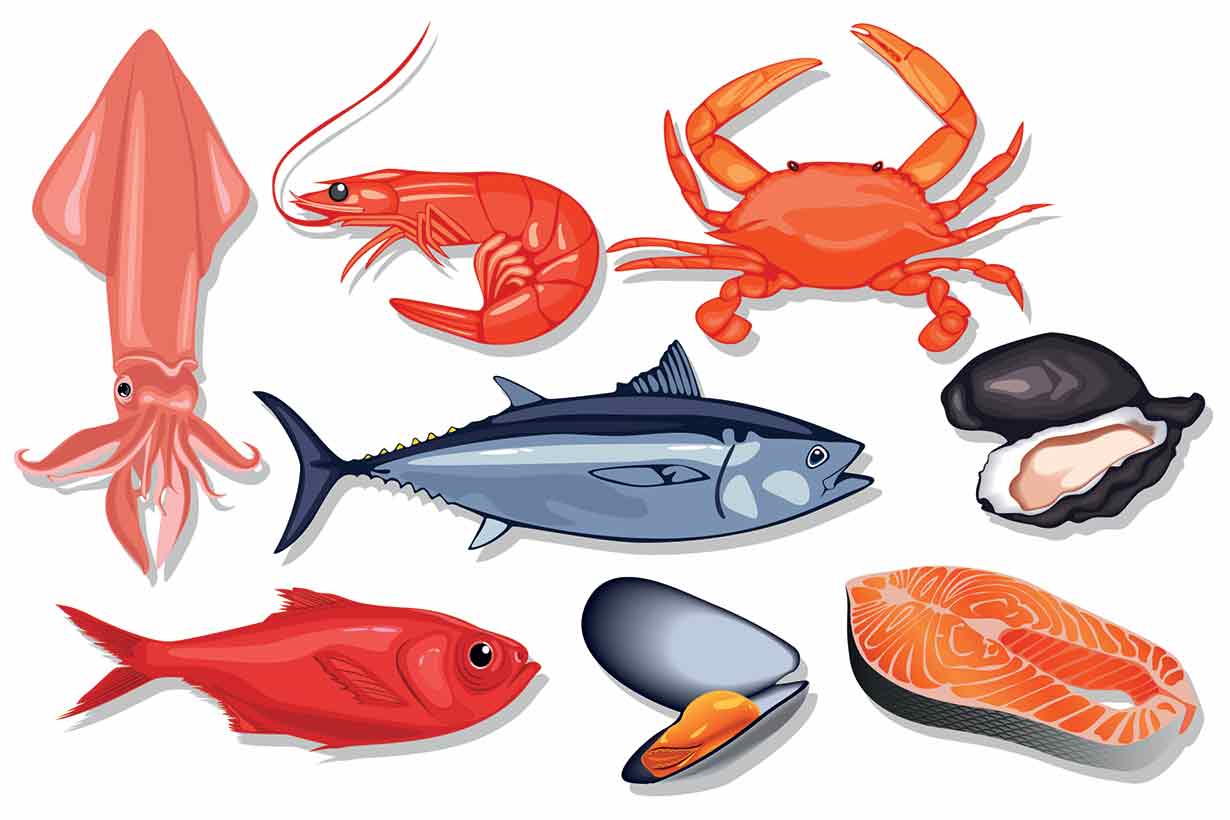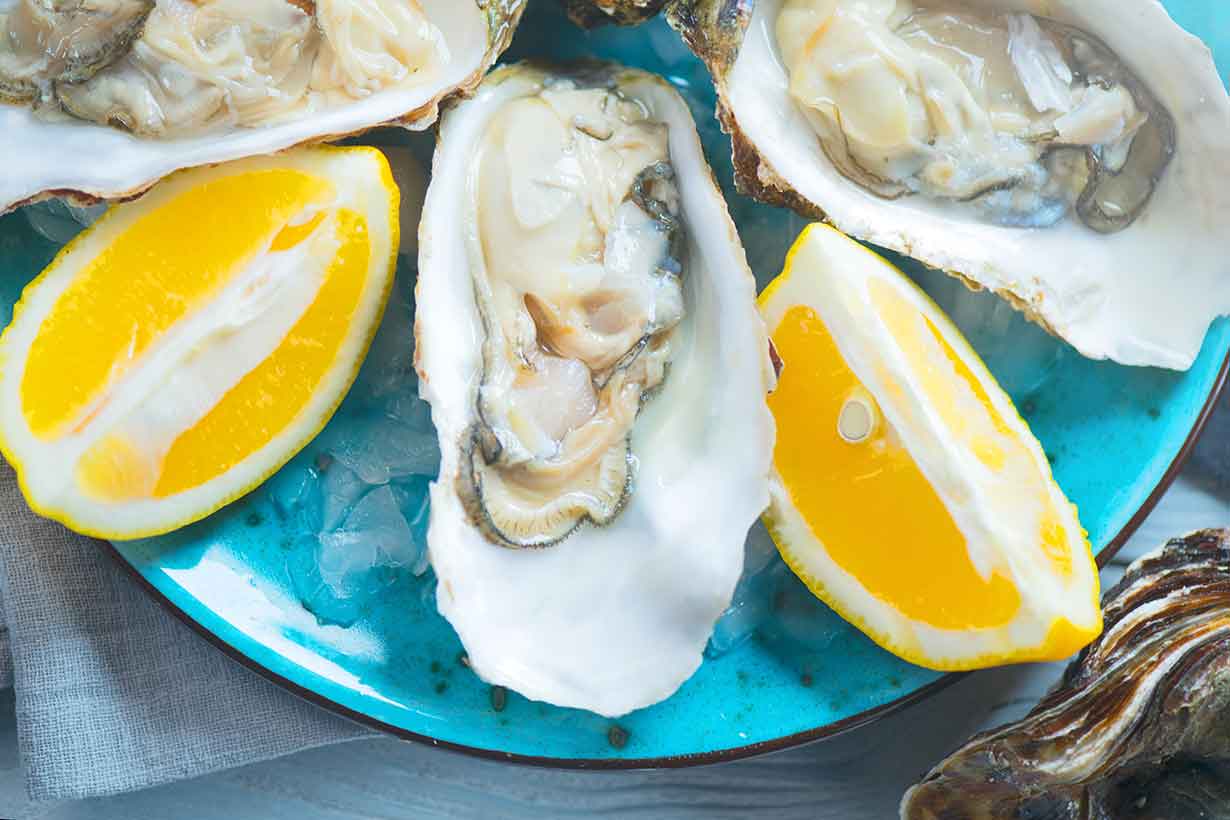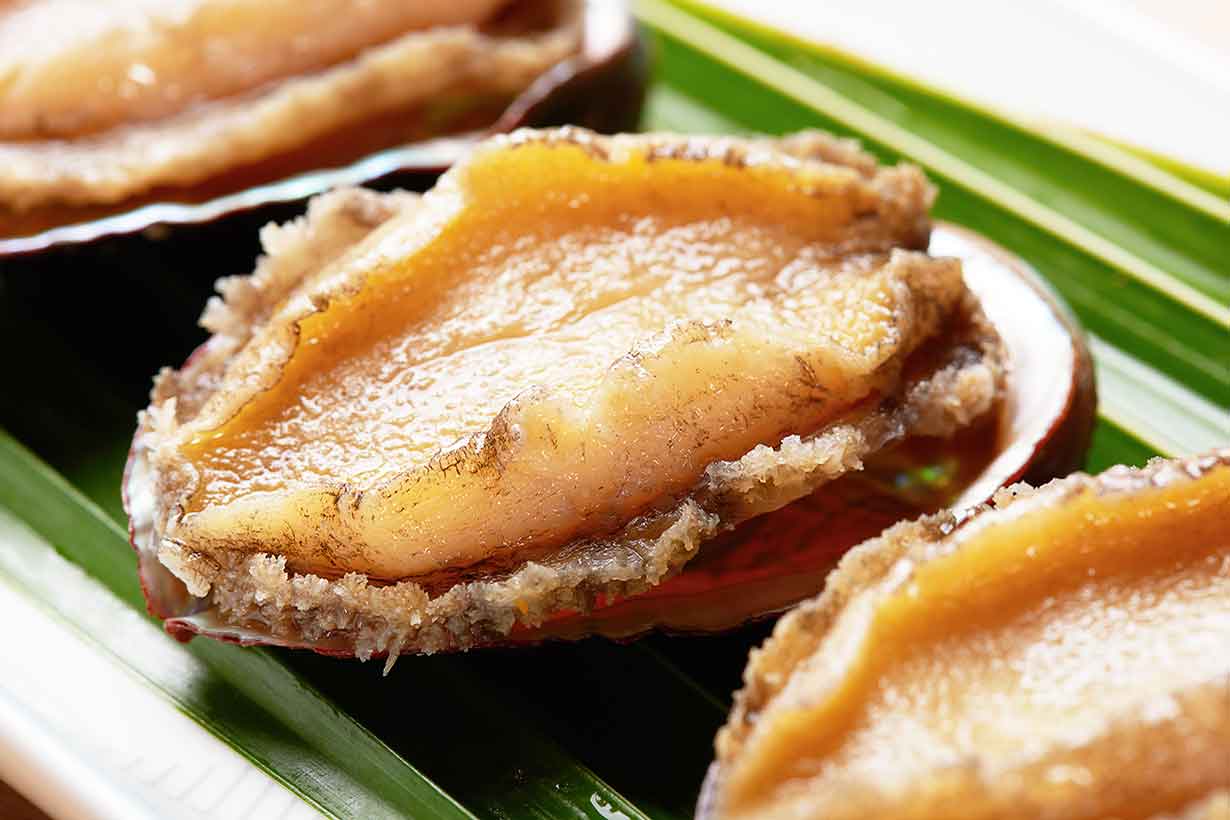Shrimp is a small but nutritious type of seafood that is part of the crustaceans group of shellfish.
On the positive side, shrimp contains a broad range of essential nutrients, and it also offers some unique benefits.
However, there are also several concerns people have about consuming this seafood.
So, is shrimp a healthy choice?
In this article, we analyze the nutrition profile, health benefits, and potential concerns in full.
Nutrition Facts
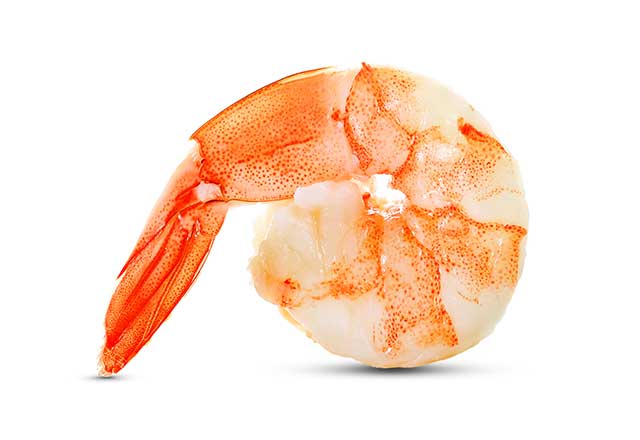
The following nutritional values are for 100 grams of shrimp in their raw state (1);
One hundred grams of shrimp is equivalent to roughly 3-4 large shrimp or 20 small shrimp.
Calories and Macros
| Calories/Nutrient | Amount (grams/kcal) |
|---|---|
| Calories | 106 kcal |
| Carbohydrate | 0.9 g |
| Fat | 1.7 g |
| Saturated Fat | 0.3 g |
| – Monounsaturated Fat | 0.3 g |
| – Polyunsaturated Fat | 0.7 g |
| – Omega-3 | 540 mg |
| – Omega-6 | 28 mg |
| Protein | 20.3 g |
Vitamins
| Vitamin | Amount (% RDI) |
|---|---|
| Vitamin D | 38 % |
| Vitamin B12 | 19 % |
| Vitamin B3 | 13 % |
| Vitamin B6 | 5 % |
| Vitamin E | 5 % |
| Vitamin A (retinol) | 4 % |
| Vitamin B5 | 3 % |
| Vitamin C | 3 % |
| Vitamin B1 | 2 % |
| Vitamin B2 | 2 % |
| Folate | 1 % |
Minerals
| Vitamin | Amount (% RDI) |
|---|---|
| Selenium | 54 % |
| Phosphorus | 20 % |
| Iron | 13 % |
| Copper | 13 % |
| Magnesium | 9 % |
| Zinc | 7 % |
| Sodium | 6 % |
| Potassium | 5 % |
| Calcium | 5 % |
| Manganese | 3 % |
Health Benefits
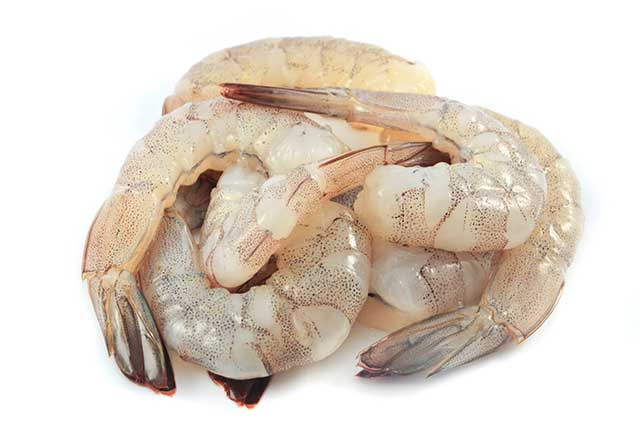
Shrimp have a wide range of beneficial nutrients and several other healthful characteristics.
Here are some of the primary health benefits they offer;
1) Good Source of Omega-3 Fatty Acids
Per 100 grams, shrimp provides 540 mg of omega-3 fatty acids in the form of DHA and EPA (1).
While this isn’t quite as high as oily fish, shrimp is still an excellent source of this essential fatty acid.
As a comparison, shrimp offers slightly more omega-3 than halibut, and more than double the omega-3 content of cod (2, 3).
Unfortunately, the majority of people are not consuming enough omega-3.
While there is no official recommended daily amount, an ‘adequate intake’ (AI) has been set at 1.6 grams for male adults and 1.1 grams for females (4).
The Importance of DHA and EPA
Additionally, the 2015-2020 Dietary Guidelines For Americans recommend at least 250 mg per day from DHA/EPA.
For those unaware, DHA/EPA is “preformed” omega-3 which, unlike ALA plant sources, does not require conversion for the body to use it (5).
However, in a 2016 study, dietary data from 15,313 Americans revealed that the average daily DHA+EPA consumption was only 84.3 mg in adults (6).
Omega-3 possesses anti-inflammatory properties, and it is thought to lower the risk of chronic diseases like cardiovascular disease and some types of cancer (7).
2) Contains the Antioxidant Astaxanthin
Shrimp contains a major antioxidant compound called astaxanthin, which we can also find in other crustaceans like lobster, crab, crawfish, and fish such as salmon (8).
On this note, cell culture studies show that astaxanthin taken from shrimp helps to reduce oxidative stress and causes the cell death of cancer cells (9).
While interesting, it should be noted that test tube studies are very different from what happens inside the human body, so we shouldn’t read too much into this.
However, clinical human intervention studies have demonstrated that astaxanthin benefits skin health.
Among these benefits, multiple studies show a reduction in wrinkles and improvements to skin texture and elasticity (10).
Additionally, rodent studies show that astaxanthin supplementation can reduce blood pressure (11).
More human research is necessary to understand the potential benefits of astaxanthin better.
3) Rich In Vitamin D
Frequently dubbed “the sunshine vitamin,” vitamin D is a hormone that is essential to human health.
Among its many benefits, vitamin D plays a significant role in metabolism, immunity, blood pressure regulation and disease prevention (12).
The best way to get vitamin D is safe sunlight exposure, but there are some good dietary sources too.
Shrimp is one of these dietary sources of vitamin D, providing 152 IU per 100 grams, equal to 38% of the RDI (1).
4) Potentially Good For the Heart

Is shrimp a heart-healthy food?
According to the existing evidence-base, it might just be that.
Despite previous worries over the cholesterol content of shrimp, the dietary guidelines recently dropped dietary cholesterol restrictions, noting that “cholesterol is not a nutrient of concern for overconsumption” (13).
The reason for this was an ever-increasing number of studies showing that dietary cholesterol doesn’t have a strong link to blood cholesterol.
For instance, recent systematic reviews have demonstrated that;
- Dietary cholesterol does not negatively affect blood lipids in recent human intervention studies (14).
- “The current literature does not support the notion that dietary cholesterol increases the risk of heart disease in healthy individuals” (15).
Additionally, in a randomized trial, a diet featuring large daily amounts of shrimp (300 grams) improved the LDL to HDL ratio and significantly decreased triglyceride levels by 13% (16).
Shrimp also contains several nutrients linked to improved cardiovascular health, such as the previously mentioned omega-3.
5) Nutrient Density: Low In Calories, High In Vitamins and Minerals
As shown in the nutrition facts, shrimp offers a wide range of beneficial nutrients for minimal calories (106 kcal per 100 grams).
This fact makes shrimp very nutrient-dense.
The more nutrient-dense foods we eat, the more beneficial nutrients we can get from our diet.
Among the nutrients shrimp offer, they are particularly high in selenium, supplying 57% of the RDI for the mineral.
Selenium acts as an antioxidant in the body, and it plays an important role in DNA repair, fighting oxidative stress, and strengthening the immune system (17).
6) Shrimp Has a Low Mercury Content
Almost all seafood is an impressive source of nutrients, but mercury contamination is a common concern with seafood.
Due to pollutants from factories and coal plants, mercury can settle into oceans and rivers worldwide. Unfortunately, this mercury can concentrate in fish and shellfish, which poses risks to the people who consume them.
While some seafood contains very high mercury concentrations, such as shark and bigeye tuna, others contain very little.
On the positive side, shrimp has one of the very lowest mercury concentrations out of all seafood.
For instance, the mean mercury contamination is 0.009 PPM for shrimp. This figure compares favorably to even other low-mercury seafood such as salmon (0.022 PPM) and herring (0.078 PPM) (18).
Furthermore, shrimp contain a high ratio of selenium compared to mercury (higher than 1:1). Research suggests that selenium has a role in “mitigating the toxicity of mercury” (19, 20).
7) Shrimp Is High In Protein
Shrimp is an excellent source of protein; it contains more than 20 grams of the macronutrient per 100 grams.
While this may not sound as high as specific cuts of meat, shrimp are more protein-dense since they offer this high amount of protein for only 106 calories.
For example, here is how their protein density compares to beef, chicken, and eggs. All values are raw (1, 21, 22);
| Food | Calories | Protein |
| 3 Large eggs | 214.5 kcal | 18.9 g |
| Chicken breast (100 g) | 110 kcal | 23.1 g |
| 80% Lean beef (100 g) | 254 kcal | 17.2 g |
| Shrimp (100 g) | 106 kcal | 20.3 g |
As the table shows, shrimp is one of the best dietary protein sources.
For another protein-dense shellfish, see this guide to clams.
8) Good Source of Iodine
Iodine is an essential mineral that the human body needs to manufacture thyroid hormone (23).
Iodine deficiency can develop if iodine intake falls below 10-20 mcg daily, leading to hypothyroidism. An iodine deficiency can be especially dangerous for infants and pregnant women (24).
In the United States, iodine intake has dropped by more than 50% since the 1970s, and iodine deficiencies are now present in some groups of people (25).
The best way to get iodine is from seafood, and shellfish and seaweed are especially good sources.
Amongst seafood, shrimp is one of the very best iodine sources, and a 3-oz serving (85 grams) provides around 35 mcg of iodine (26).
Note: for one of the best dietary sources of iodine, see this guide to abalone.
9) Provides Taurine
Shrimp is an excellent source of taurine, which is an amino acid with several potential health-protective properties.
Research on taurine from human clinical trials has demonstrated that it may potentially (27, 28, 29);
- Reverse blood vessel abnormalities in young patients with diabetes.
- Lower plasma levels of homocysteine, which is an independent risk factor for cardiovascular disease.
- Decrease the levels of oxidized lipids and reduce overall oxidative stress.
Seafood is the best dietary source of taurine, and shrimp offers the third highest concentration behind clams and octopus (30).
Concerns
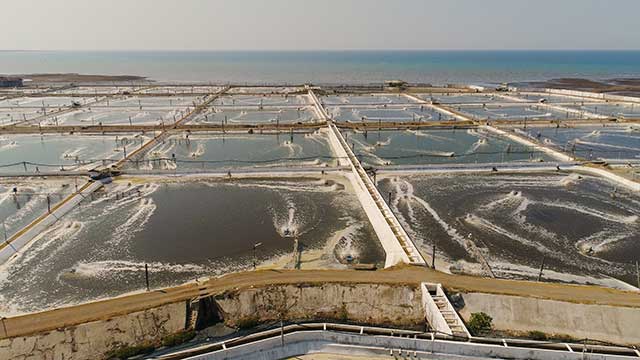
There are also a small number of potential drawbacks from shrimp consumption.
Here are two of the most common concerns.
1) Shrimp (Shellfish) Allergy
Shellfish allergy is one of the most common allergies in the world. Allergic reactions to crustaceans can be particularly serious, which can be caused by shellfish such as shrimp and crab – and even products like crab sticks that contain small amounts of shellfish.
On this note, physician-diagnosed (or well-evidenced) seafood allergy is thought to affect around 2.3% of the United States population, equating to millions of people (31).
The cause of this allergy appears to be a protein found in shellfish called tropomyosin. Shellfish allergy can result in severe reactions that have been known to cause serious adverse effects, and sadly, numerous deaths (32, 33).
Symptoms of an allergic reaction to shellfish may include facial swelling, difficulty breathing, a tingling feeling in the mouth, stomach cramps, and dizziness (34).
Anyone who suspects they are having an allergic reaction to shellfish should seek immediate medical attention.
2) Chemical Contaminants In Farmed Shrimp
Although farmed shrimp from North America and Western Europe are strongly regulated, this is not the case for some imported Asian shrimp.
For instance, Vietnamese shrimp farming is particularly well-documented for using excessive antibiotics, some of which are illegal (35).
Worryingly, the FDA refused over 111 entry lines of shrimp imports in just one month in 2018. This refusal was due to the presence of potentially harmful (and banned) antibiotics and veterinary drug residues (36).
However, this asks the question of how many contaminated imports actually do pass into the country.
With this in mind, it may be better to focus on domestic shrimp rather than imported products.
Final Thoughts
Shrimp are an excellent source of nutrition, and they offer a significant number of beneficial compounds for very few calories.
Overall, this small shellfish is a great way to increase our intake of omega-3 and protein.
Consuming shrimp should also significantly improve the nutrient density of most diets.
For more on shellfish, see this guide to oysters.

